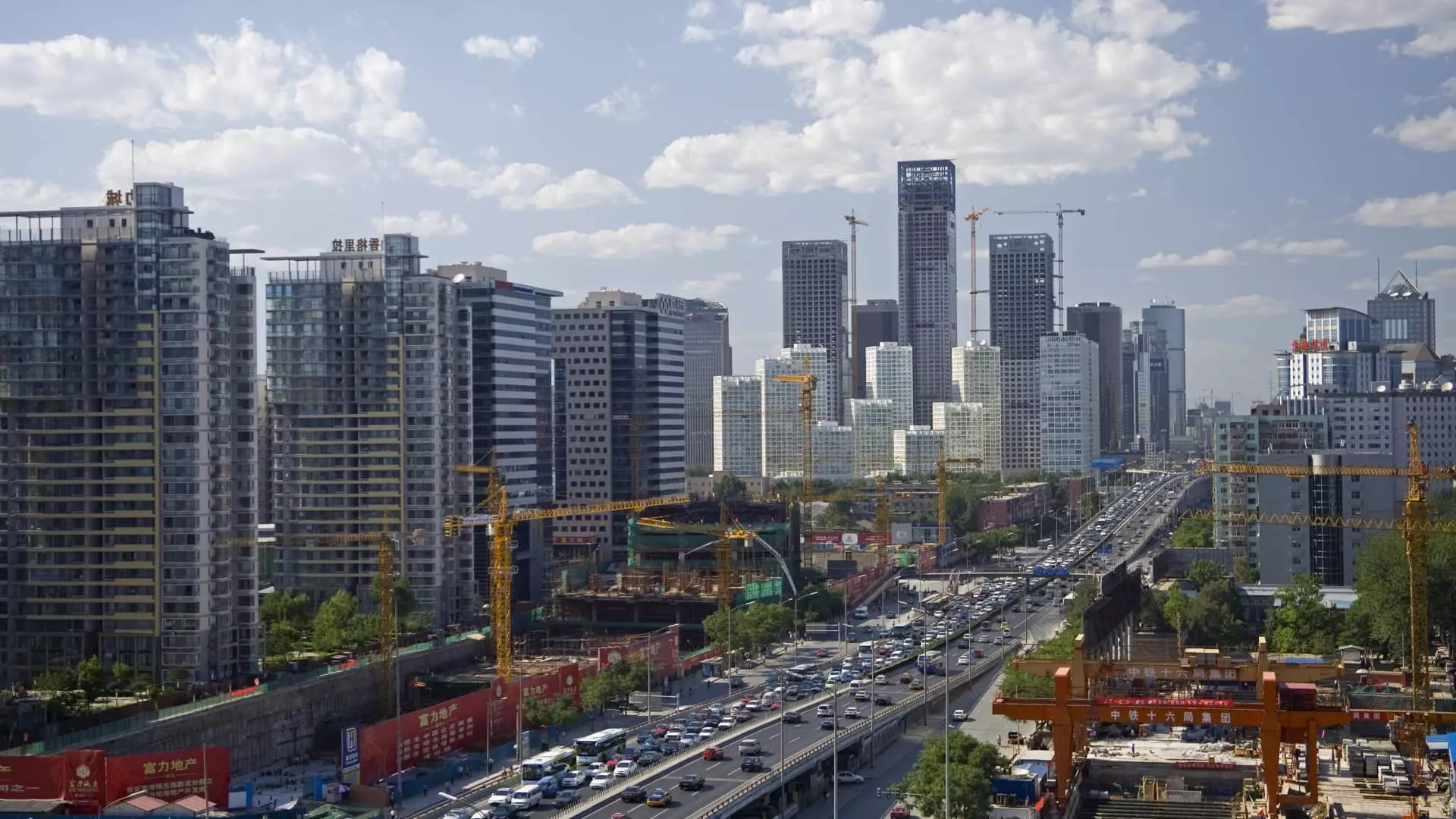The recent announcement that China’s economy grew by an impressive 5.4% in the first quarter has been hailed as a beacon of optimism, but beneath this facade lies a more complex and troubling reality. While the figure surpasses analysts’ predictions and touts the efficacy of a stimulus-driven recovery, many economists are rightfully skeptical. The U.S.-China trade war casts a long shadow over this growth, with tariff threats looming large over China’s economic future. In a world where headlines often celebrate numbers more than substance, the question worth pondering remains: Is this growth sustainable, or is it merely a transient spike before the inevitable decline?
The economic landscape is riddled with contradictions. Retail sales jumped by 5.9%, outperforming expectations, and industrial output surged by 7.7%. Such figures initially seem to indicate buoyancy; however, they gloss over significant underlying issues, primarily within the real estate sector, which is sputtering under a deleterious 9.9% decline. This inconsistency between growth metrics may suggest a bead of optimism belied by weakening core foundations, particularly in the face of rising domestic challenges, which policymakers have yet to adequately address.
The Trade War: A Sword of Damocles
The trade battle with the United States is not merely a background noise; it is an existential threat eroding the very fabric of China’s growth narrative. As tariffs ballooned to an astonishing 145%, the repercussions ripple through the economy. Economists, including those from Morgan Stanley, have pointedly warned that the growth forecast is likely to deteriorate significantly, with the second quarter poised to expose the vulnerabilities accumulated during this tumultuous period.
Despite the current uptick, the overall sentiment is alarmingly pessimistic. UBS Group has reiterated this notion, projecting a mere 3.4% growth for China this year, a stark reminder that the tariffs are not just temporary obstacles but fundamental shifts that could recalibrate the global trade landscape to China’s detriment. We are left urging policymakers to adopt a more strategic, proactive stance rather than remaining reactive, which often breeds missed opportunities. The question now is whether China can adapt its economic model to weather the storms brewing on the horizon.
Pivots to Innovation and Domestic Consumption
In response to these mounting pressures, the Chinese government is emphasizing a pivot towards innovation and strengthening domestic consumption. Notably, initiatives like the launch of AI breakthroughs by startups such as DeepSeek highlight an intent to shift gears. However, innovation can’t be the sole pillar upon which recovery stands. While fostering homegrown technology is commendable, it is crucial to acknowledge that a vibrant economy also hinges on robust consumer spending.
The statistics bureau’s expectation of “proactive and effective macro policies” is well-founded. Yet, the pressing issue remains the stalling domestic demand that fails to keep pace with the audacious goals set forth. Economic sustainability cannot rely solely on the whims of emerging technology; it requires a comprehensive approach addressing the broader economic climate. Policymakers must act swiftly to catalyze consumer confidence and spending, as stasis in this area may create a vicious cycle of declining demand stifling growth.
The Role of Federal Stimulus
The anticipation of a fiscal stimulus program of 1-1.5 trillion yuan in the second half of the year signals a realization among Chinese officials of the need for immediate action. Nonetheless, stimulus measures, while essential, should not function as mere band-aids over deeper systemic issues. They risk becoming political tools instead of effective economic strategies. If not carefully designed to align with longer-term structural reforms, these measures could lead to inflationary pressures or increased national debt, ultimately doing more harm than good.
The looming question is whether the government can balance immediate relief while igniting a long-term sustainable growth engine. Monetary policy adjustments, such as interest rate cuts, provide a pivotal opportunity to stimulate the economy; however, they also demand rigorous scrutiny to avoid pitfalls associated with over-leverage in the housing and investment markets.
In the face of tricky geopolitical relations and internal challenges, China’s economic narrative continues to unfold. The prospect of an invigorated economy threatens to be overshadowed by the clutches of external pressures and ineffective domestic policies unless the nation commits to a robust, multifaceted response. While the outlook may seem gloomy, the path toward a resilient economy lies in responsible governance, innovation beyond fleeting moments, and comprehensive domestic focus.


Leave a Reply